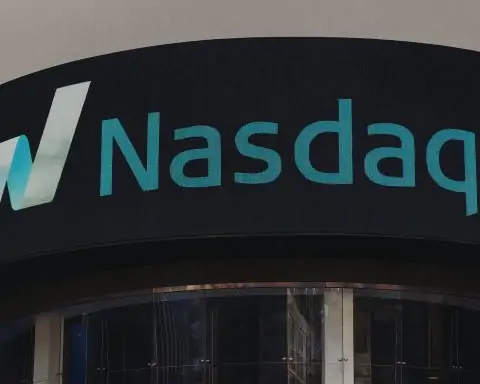- CandyWarehouse Chapter 11: Sugar Land, TX-based CandyWarehouse.com, Inc. filed a Chapter 11 petition on Oct. 24, 2025 – just one week before Halloween. The filing lists only about $0.1–0.5 million in assets against $1–10 million in liabilities [1].
- Niche Retailer: Founded in 1998 and proudly “woman-owned, family-operated,” CandyWarehouse has long supplied bulk candy and sweets to hotels, restaurants, parks and event planners [2]. It differentiates itself by selling “only the best, most delicious sweets” and by having a personal-service approach [3] [4].
- Industry Trends: Analysts say the candy sector is under strain. U.S. consumers are shifting toward health-focused treats, even candy with vitamins or zero sugar. Zolli Candy CEO Alina Morse notes adults now prefer “functional hard candies, with zero sugar, mint, and fruit flavors” [5]. At the same time, inflation-hit shoppers are balking at rising prices and smaller package sizes – “Consumers have taken a step back… Larger sizes are fading away, and price sensitivity is playing out,” says Chris Borges of confectioner Perfetti Van Melle [6].
- Ingredient Costs: Cocoa prices spiked (~+178% in 2024) after poor West African harvests, pushing chocolatiers to raise prices. (For example, CNN cites Hershey saying its variety packs jumped 22% in price last year [7].) Many consumers are now opting for non-chocolate treats as a result.
- Market Impact: The bankruptcy shock comes as public candy stocks hold steady. Hershey (NYSE: HSY) trades in the mid-$180s (near its 52-week low) [8], and analysts have raised its 12-month target to roughly $190–195 [9] (even though the company warns 2025 earnings could plunge ~36–38% [10]). Mondelez (NASDAQ: MDLZ) is around $62, with Wall Street estimating a consensus target near $72 [11]. By contrast, e-commerce giants – such as Amazon (NASDAQ: AMZN, ~$224) and Walmart (NYSE: WMT, ~$102) – have strong analyst backing: AMZN is widely rated “buy” with ~20% upside expected [12], and Walmart has a “strong buy” consensus with targets ~10–13% above its current level [13].
CandyWarehouse’s decision is unusual timing. The online sweets retailer said in court filings that it is insolvent and unable to pay its debts. Bankruptcy records confirm the Chapter 11 petition lists roughly $100K–$500K in assets versus $1M–$10M in debts [14]. A hearing is set for Oct 29 on motions to continue operations (such as paying workers and suppliers), so CandyWarehouse can restructure rather than liquidate [15]. In a press release, the company noted this step “will determine how the company moves forward as it works to preserve its brand and nationwide customer base” [16].
Retail analysts say CandyWarehouse’s woes reflect broader industry shifts. WhatNow News highlights that CandyWarehouse is a “woman-owned, family-operated” niche supplier that has cultivated loyal customers since 1998 [17]. But the retailer faced headwinds as shopper tastes changed. Nutrition-conscious consumers now seek “healthy” or sugar-free sweets: a recent study found nearly half of candy buyers wanted lower-sugar options. Candy executives confirm this trend: Alina Morse of Zolli Candy told Snack & Bakery that post-pandemic customers “are looking for… ways to get in vitamins or other supplementary dietary needs,” hence the rise of functional candies [18]. Similarly, Perfetti’s Chris Borges notes that manufacturers have responded by reducing package sizes to keep prices palatable [19]. All this has depressed demand for standard candies right when holiday sales should peak.
The timing – one week before Halloween – magnifies the impact. Halloween is traditionally the biggest candy-selling season, and the bankruptcy filing caught industry watchers by surprise. It follows recent trouble for other party-supply retailers: Party City, which also sells candy, filed for Chapter 11 in October 2025, blaming “immensely challenging” market conditions and inflationary costs [20]. Party City admitted even after cutting $1 billion of debt in 2023, “macroeconomic headwinds proved too severe to overcome” [21]. These cases underscore how retailers with heavy party/candy sales are squeezed by rising ingredient and operation costs at the same time consumers tighten budgets.
Looking ahead, investors will watch how CandyWarehouse reorganizes. The Chapter 11 route allows the company to keep selling while it negotiates with creditors. If it can restructure successfully, it may emerge leaner. Even so, analysts expect the candy sector to remain under pressure. For public “sweet” companies, forecasts are mixed: Hershey’s own guidance implies sharp profit cuts, but Wall Street still sees modest upside in its shares [22] [23]. Mondelez, which makes iconic candies, is viewed with caution (consensus price target ~14% above current) [24]. By contrast, tech-leveraged retailers are on the upswing. TS2 Tech notes that Amazon’s stock – a bellwether for online retail – is nearly flat YTD but has over 20% potential upside per analysts [25]. Walmart, benefiting from AI-driven e-commerce innovations, is rated “Strong Buy” with analysts eyeing ~10% gains [26].
In summary, CandyWarehouse’s collapse highlights big changes in how Americans consume treats. Health and budget concerns, plus volatile commodity costs, have tempered candy demand. “Adults are looking for functional” sweets, says one industry CEO, a far cry from the indulgence of past Halloween seasons [27]. As CandyWarehouse restructures, shoppers will be watching whether the “sweet tooth” returns next year – or if more confectionery brands will suffer in a bitter economy.
Sources: Bankruptcy filings [28] [29]; industry press (US Sun, ET) [30] [31] [32]; analyst reports [33] [34] [35] [36] [37].
References
1. www.pacermonitor.com, 2. whatnow.com, 3. economictimes.indiatimes.com, 4. whatnow.com, 5. economictimes.indiatimes.com, 6. economictimes.indiatimes.com, 7. economictimes.indiatimes.com, 8. www.marketbeat.com, 9. www.marketbeat.com, 10. foodinstitute.com, 11. www.marketbeat.com, 12. ts2.tech, 13. ts2.tech, 14. www.pacermonitor.com, 15. whatnow.com, 16. whatnow.com, 17. whatnow.com, 18. economictimes.indiatimes.com, 19. economictimes.indiatimes.com, 20. apnews.com, 21. apnews.com, 22. foodinstitute.com, 23. www.marketbeat.com, 24. www.marketbeat.com, 25. ts2.tech, 26. ts2.tech, 27. economictimes.indiatimes.com, 28. www.pacermonitor.com, 29. whatnow.com, 30. economictimes.indiatimes.com, 31. economictimes.indiatimes.com, 32. economictimes.indiatimes.com, 33. foodinstitute.com, 34. ts2.tech, 35. ts2.tech, 36. www.marketbeat.com, 37. www.marketbeat.com










